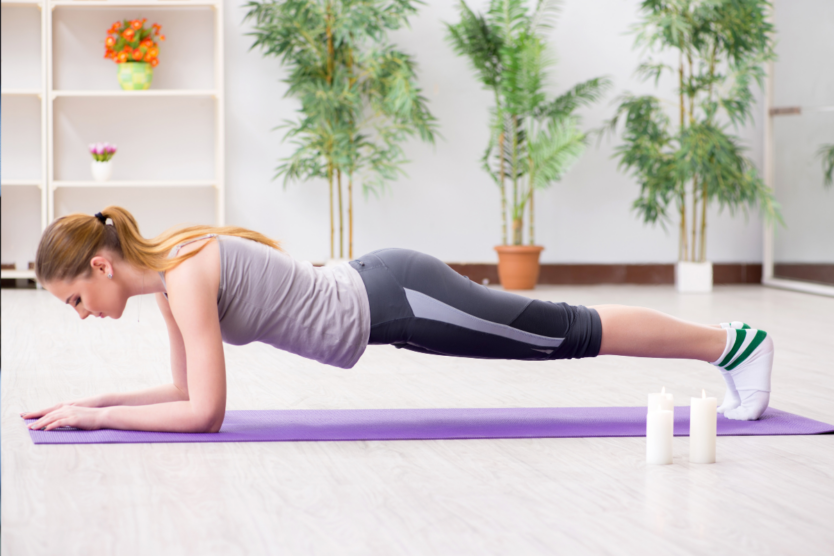Athletes train for their specific sport, building skills that translate onto the court, into the pool or around the track.
There are benefits to more general training such as yoga, stretching and cardio workouts. How about the pelvic floor? Athletes may get strong in the muscles needed for their sport, but they need to pay attention to their pelvic floor, too.
Here’s a look at exercises to strengthen pelvic floor muscles for athletes, and why this kind of workout is so important.
The Pelvic Floor
The pelvic floor is the hammock-like structure of ligaments, muscles and nerves that support your pelvic organs, including your bladder, uterus, vagina and rectum.
Why is the Pelvic Floor Important?
Your pelvic floor is vital to your overall health, as it keeps the bladder, intestines and reproductive organs in place. It’s also responsible for supporting the function of urination and bowel movements, and pregnancy and delivery of children.1
When things go wrong with your pelvic floor, you may suffer from various conditions known as pelvic floor dysfunction. This is when you can’t correctly relax and coordinate your pelvic floor muscles. Some women have pelvic floor muscles that are too tight, but most pelvic floor disorders are caused by weakened pelvic floor muscles.
Athletes and the Pelvic Floor
Depending on your chosen sport, you will likely do specific exercises to improve performance and avoid injury. One component that’s important to any athletic activity is your core and the corresponding pelvic floor strength.
How the Pelvic Floor Improves Performance
The pelvic floor is part of your core and contributes to your overall core strength and stability. Here’s how strong pelvic floor muscles help with athletic performance:2
- Improves strength and stability which provides improved coordination and power.
- Improves response time and ability to change direction.
- Improves breathing mechanics.
- Decreases the risk of injuries.
- Helps manage intra-abdominal pressure changes.
A weakened core and pelvic floor can lead to injuries. For instance, research has found an association between core weakness and hip muscle strength imbalance possibly creating lower back injuries, and knee injuries in female athletes.2
Athletes are at Risk
There are certain risks for developing pelvic floor issues, like factors that put pressure on the pelvic floor—being overweight, having chronic constipation, or chronic coughing from smoking.3
Athletes may also be at risk of developing pelvic floor dysfunction. For instance, athletes who participate in high-impact sports, or those who engage in frequent and intense training like running, jumping or heavy lifting.
These risks increase if you train while you’re experiencing symptoms of pelvic floor dysfunction. Unlike other sports-related injuries that can heal with rest, pelvic floor dysfunction will worsen if left untreated.4
Exercises for the Pelvic Floor
So what can you do to improve your pelvic floor muscles, whether you’re an elite athlete or a weekend runner?
One of the best ways that any woman can prevent weak muscles and enhance pelvic health is by strengthening pelvic floor muscles with specific exercises known as “Kegels.”
Kegel Exercises for Pelvic Health
Kegel exercises involve contracting your pelvic floor muscles for 3 seconds and then releasing the muscles and relaxing for 3 seconds.
It’s important to make sure you’re exercising the proper muscles, so you may want to check with a doctor or physical therapist to ensure you’ve got the correct technique. Research has proven that pelvic floor exercises help keep pelvic floor muscles “fit.”
There are tools available to help you do Kegels properly like Gynesis. Gynesis pelvic floor trainer shorts support women to take control of their pelvic health with a simple, effective, external, and accessible solution. Using advanced technology, Gynesis delivers targeted muscle stimulation with Kegel exercises that helps retrain and rebuild your pelvic floor—so you can achieve stronger bladder control and with confidence.
Here are other top exercises to strengthen the pelvic floor muscles.
The Double Leg Bridge
Lay on your back with your knees bent, feet flat on the floor, and your heels close to your bum. Keep your hips level and engage your abdominals. Raise and lower your hips slowly and with control, focusing on stabilizing your legs with your glutes instead of your hamstrings. As you progress, you can hold a weight across your hips.
Bridge with Pullover
Assume the same position as the double leg bridge. Hold a light weight in both hands and raise your arms toward the ceiling. Lift your hips and pelvic floor, and pull your straight arms to your hips. Then relax your pelvic floor as you reverse the motion, returning the weight and your hips to the starting position.
Planks
Lie face down on the floor, then lift your body onto your toes and forearms. As you progress, you may lift onto your hands instead of forearms. Keep your body in a straight line, engaging your core and pelvic floor muscles. Hold the position for 30 seconds, gradually building to several minutes per plank. As you get stronger, you can do plank jacks, which is when you jump your feet wide and back together.
Squats
These are a great all-around exercise for pelvic floor muscles, as well as to strengthen the lower body and improve balance and coordination. Stand with your feet shoulder-width apart, and lower your bum and body as if sitting back into a chair. Keep your knees behind your toes, and engage your pelvic floor muscles as you return to a standing position.
Split Squats
Similar to squats, you start by standing with your feet apart, then step your left foot back and place the ball of your left foot on the ground. Keep your front shin vertical and maintain your center of gravity over your front foot. Inhale as you bend both knees and lower your body until your left knee hovers above the ground. Drive through your right heel and rise to standing. Switch legs.
Other Activities for Your Pelvic Floor
Other more general activities can also help your pelvic floor.
For instance, stretching to correct your posture can help realign your muscles. Core strengthening helps maintain good posture and will reduce the strain on your pelvic floor muscles. Yoga and deep breathing exercises help to strengthen pelvic floor muscles by encouraging the diaphragm to contract. This in turn lifts and tightens your pelvic floor muscles.4
Athletes and Pelvic Health
Athletes who want to perform their best should incorporate pelvic floor strengthening into their training regimens.
Here are the key benefits:4
- Reduce pelvic floor dysfunction: Exercise can correct the underlying problem related to pelvic floor disorder or prevent any problems from occurring during high-intensity activity.
- Prevent future pelvic injuries: Pelvic health conditions are common in athletes and are often caused by repetitive actions or heavy impacts. Pelvic floor exercise can help treat injuries before they become chronic, or reduce the risk of future injuries.
- Eliminate pelvic pain: Pelvic floor strength can help reduce symptoms of pelvic pain. It also helps athletes achieve peak performance and avoid long-term disability.
- Improve overall muscle performance: Pelvic floor disorders are often caused by poor posture, improper lifting techniques, or muscle imbalances. These can all impact your athletic performance. Correcting these muscle imbalances will allow you to perform your best.
Everyone Should Focus on Pelvic Health
It’s not just elite athletes who need to take care of their pelvic floor. All women can benefit from pelvic floor exercises, as both a prevention from pelvic floor disorders, and as a treatment if you have an existing condition. The main cause of these conditions is weakened pelvic floor muscles.
Don’t Wait to do Kegels
In fact, women should not wait until muscles are weakened to start performing Kegels on a regular basis. Women as young as those in their 20s can include these exercises in their regular routine, along with other good pelvic health habits like avoiding straining when you poop, not holding your urine too long, and not getting constipated.
See A Doctor
Whether you’re an elite athlete or you like to walk the dog every day, maintaining your pelvic health is important to overall health. So is physical activity. If you have any symptoms of a pelvic floor disorder, don’t leave it untreated. Use our Physician Finder to find a doctor near you with expertise in women’s health. You can also get advice on an exercise program that suits your activity level and lifestyle, including important pelvic floor exercises.
















